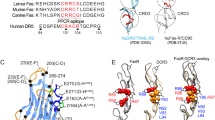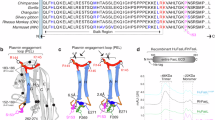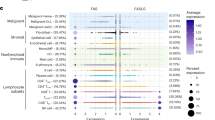Abstract
Alterations in the expression of Fas (CD95/APO-1) and its ligand (FasL) have been demonstrated in various types of cancers as a mechanism for tumour cell to escape from the immune system. In the present study, we evaluated the expression of the Fas and FasL genes in a wide range of primary gynaecological carcinomas. These included 31 ovarian, 29 cervical and 25 endometrial carcinoma tissues as well as four ovarian and three cervical carcinoma cell lines. Our real-time quantitative reverse transcription polymerase chain reaction analysis revealed that down-regulation of Fas expression is more prominent than the up-regulation of FasL expression in all types of gynaecological cancer studied. This down-regulation of Fas expression was also true for the seven carcinoma cell lines. Only one cervical carcinoma cell line, DoT, exhibited a high level of FasL expression. These results indicated that down-regulation of Fas expression is a common abnormality in many types of cancers including gynaecological cancers, whereas an increase in FasL expression is not a common phenomenon in these cancers. © 2000 Cancer Research Campaign
Similar content being viewed by others
Article PDF
Change history
16 November 2011
This paper was modified 12 months after initial publication to switch to Creative Commons licence terms, as noted at publication
References
Alderson MR, Tough TW, Davis-Smith T, Braddy S, Falk B, Schooley KA, Goodwin RG, Smith CA, Ramsdell F and Lynch DH (1995) Fas ligand mediates activation induced cell death in human T lymphocytes. J Exp Med 181: 71–77
Becker-Andre M (1991) Quantitative evaluation of mRNA levels. Meth Mol Cell Biol 61: 3724–3728
Bellgrau D, Gold D, Selawry H, Moore J, Franzusoff A and Duke RC (1995) A role for CD95 ligand in preventing graft rejection. Nature (Lond.) 377: 630–632
Daniel PT and Krammer PH (1994) Activation induces sensitivity toward APO-1 (CD95)-mediated apoptosis in human B cells. J Immunol 152: 5624–5632
Debatin K-M and Krammer PH (1995) Resistance to APO-1 (CD95) induced apoptosis in T-ALL is determined by a bcl -2 independent anti-apoptotic program. Leukemia 9: 815–820
Evan G and Littlewood T (1998) A matter of life and cell death. Science 281: 1317–1321
Fenton RG, Hixon JA, Wright PW, Brooks AD and Sayers TJ (1998) Inhibition of Fas (CD95) expression and Fas-mediated apoptosis by oncogenic Ras. Cancer Res 58: 3391–3400
Gibson UEM, Heid CA and Williams PM (1996) A novel method for real time quantitative RT-PCR. Genome Res 6: 995–1001
Gratas C, Tohma Y, Barnas C, Taniere P, Hainaut P and Ohgaki H (1998) Up-regulation of Fas (APO-1/CD95) ligand and down-regulation of Fas expression in human esophageal cancer. Cancer Res 58: 2057–2062
Griffith TS, Brunner T, Fletcher SM, Green DR and Ferguson TA (1995) Fas ligand-induced apoptosis as a mechanism of immune privilege. Science 270: 1189–1192
Guo MW, Mori E, Xu JP and Mori T (1994) Identification of Fas antigen associated with apoptotic cell death in murine ovary. Biochem Biophys Res Commun 203: 1438–1446
Hahne M, Rimoldi D, Schroter M, Romero P, Schreier M, French LE, Schneider P, Bornand T, Fontana A, Lienard D, Cerottini J-C and Tschopp J (1996) Melanoma cell expression of Fas (Apo-1/CD95) ligand: implications for tumor immune escape. Science 274: 1363–1366
Hueber A-O, Zoring M, Lyon D, Suda T, Nagata S and Evan GI (1997) Requirement for the CD95 receptor-ligand pathway in c- Myc -induced apoptosis. Science 278: 1305–1309
Imai A, Horibe S, Takagi A, Ohno T and Tamaya T (1997) Frequent expression of Fas in gonadotropin-releasing hormone receptor-bearing tumors. Eur J Obstet Gynecol Reprod Biol 74: 73–78
Ju ST, Cui H, Panka DJ, Ettinger R and Marshak-Rothstein A (1994) Participation of target Fas protein in apoptosis pathway induced by CD4+ Th1 and CD8+ cytotoxic T cells. Proc Natl Acad Sci USA 91: 4185–4189
Keane MM, Ettenberg SA, Lowrey GA, Russell EK and Lipkowitz S (1996) Fas expression and function in normal and malignant breast cell lines. Cancer Res 56: 4791–4798
Kellogg DE, Sninsky JJ and Kowk S (1990) Quantitation of HIV-1 proviral DNA relative to cellular DNA by the polymerase chain reaction. Anal Biochem 189: 202–208
Leithauser F, Dhein J, Mechtersheimer G, Koretz K, Bruderlein S, Henne C, Schmidt A, Debatin K-M, Krammer PH and Moller P (1993) Constitutive and induced expression of APO-1, a new member of the nerve growth factor/tumor necrosis factor receptor superfamily, in normal and neoplastic cells. Lab Invest 69: 415–429
Mensink E, Locht AV, Shattenberg A, Linders E, Schaap E, Kessel AG and Whitte TD (1998) Quantitation of minimal residual disease on Philadelphia chromosome positive chronic myeloid leukemia patients using real-time quantitative RT-PCR. Br J Haematol 102: 768–774
Micheau O, Solary E, Hammann A, Martin F and Dimanche-Boitrel MT (1997) Sensitization of cancer cells treated with cytotoxic drugs to fas-mediated cytotoxicity. J Natl Cancer Inst 89: 783–789
Moller P, Koretz K, Leithhauser F, Bruderlein S, Henne C, Quentmeir A and Krammer PH (1994) Expression of APO-1 (CD95), a member of the NGF/TNF receptor superfamily, in normal and neoplastic colon epithelium. Int J Cancer 57: 371–377
Muller M, Wilder S, Bannasch D, Israeli D, Lehlbach K, Li-Weber M, Friedman SL, Galle PR, Stremmel W, Oren M and Krammer PH (1998) p53 activates the CD95 (APO-1/Fas) gene in response to DNA damage by anticancer drugs. J Exp Med 188: 2033–2045
Nagata S and Golstein P (1995) The Fas death factor. Science 267: 1449–1456
Niehans GA, Brunner T, Frizelle SP, Liston JC, Salerno CT, Knapp DJ, Green DR and Kratzke RA (1997) Human lung carcinomas express Fas ligand. Cancer Res 57: 1007–1012
O'Connell J, O'Sullivan GC, Collins JK and Shanahan F (1996) The Fas counterattack: Fas-mediated T cell killing by colon cancer cells expressing Fas ligand. J Exp Med 184: 1075–1082
Owen-Schaub LB, Radinsky R, Kruzel E, Berry K and Yonehara S (1994) Anti-Fas on nonhematopoietic tumors: levels of Fas/APO-1 and bcl-2 are not predictive of biological responsiveness. Cancer Res 54: 1580–1586
Rissoan M, Soumelis V, Kadowaki N, Grouard G, Briere F, Malefyt R and Liu Y (1999) Reciprocal control of T helper cell and dendritic cell differentiation. Science 283: 1183–1186
Sheard MA, Vojtesek B, Janakova L, Kovarik J and Zaloudik J (1997) Up-regulation of Fas (CD95) in human p53 wild-type cancer cells treated with ionizing radiation. Int J Cancer 73: 757–762
Shima Y, Nishimoto N, Ogata A, Fujii Y, Yoshizaki K and Kishimoto T (1995) Myeloma cells express Fas antigen/APO-1 (CD95) but only some are sensitive to anti-Fas antibody resulting in apoptosis. Blood 85: 757–764
Shiraki K, Tsuji N, Shioda T, Isselbacher KJ and Takahashi H (1997) Expression of Fas ligand in liver metastases of human colonic adenocarcinomas. Proc Natl Acad Sci USA 94: 6420–6425
Strand S, Hofmann WJ, Hug H, Muller M, Otto G, Strand D, Mariani SM, Stremmel W, Krammer PH and Galle PR (1996) Lymphocyte apoptosis induced by CD95 (APO-1/Fas) ligand-expressing tumor cells: a mechanism of tumor evasion?. Nat Med 2: 1361–1366
Suzuki A, Enari M, Eguchi Y, Matsuzawa A, Nagata S, Tsujimoto Y and Iguchi T (1996) Involvement of Fas in regression of vaginal epithelia after ovariectomy and during an estrous cycle. EMBO J 15: 211–215
Tabibzadeh S, Zupi E, Babaknia A, Liu R, Marconi D and Romanini C (1995) Site and menstrual cycle-dependent expression of proteins of the tumour necrosis factor (TNF) receptor family, and BCL-2 oncoprotein and phase-specific production of TNF-α in human endometrium. Hum Reprod 10: 277–286
Takagi A, Imai A, Horibe S, Ohno T and Tamaya T (1998) Lack of evidence for expression of Fas ligand in Fas-bearing tumors. Oncol Rep 5: 377–380
Thompson CB (1995) Apoptosis in pathogenesis and genes and treatment of disease. Science 267: 1456–1461
Xerri L, Devilard E, Hassoun J, Mawas C and Birg F (1997) Fas ligand is not only expressed in immune privileged human organs but is also coexpressed with Fas in various epithelial tissues. Mol Pathol 50: 87–91
Yonehara S, Nishimura Y, Kishil S, Yonehara M, Takazawa K, Tamatani T and Ishii A (1994) Involvement of apoptosis antigen Fas in clonal deletion of human thymocytes. Int Immunol 6: 1849–1856
Zornig M, Grzeschiczek A, Kowalski M-B, Hartmann K-U and Moroy T (1995) Loss of Fas/APO-1 receptor accelerates lymphomagenesis in Eμ L- myc transgenic mice but not in animals infected with MoMuLV. Oncogene 10: 2397–2401
Author information
Authors and Affiliations
Rights and permissions
From twelve months after its original publication, this work is licensed under the Creative Commons Attribution-NonCommercial-Share Alike 3.0 Unported License. To view a copy of this license, visit http://creativecommons.org/licenses/by-nc-sa/3.0/
About this article
Cite this article
Das, H., Koizumi, T., Sugimoto, T. et al. Quantitation of Fas and Fas ligand gene expression in human ovarian, cervical and endometrial carcinomas using real-time quantitative RT-PCR. Br J Cancer 82, 1682–1688 (2000). https://doi.org/10.1054/bjoc.2000.1118
Received:
Revised:
Accepted:
Published:
Issue date:
DOI: https://doi.org/10.1054/bjoc.2000.1118
Keywords
This article is cited by
-
Toxoplasmosis and abortion: pro- and anti-inflammatory cytokines gene expression of the host immune cells
Egyptian Journal of Medical Human Genetics (2019)
-
Fas/FasL, Bcl2 and Caspase-8 gene polymorphisms in Chinese patients with rheumatoid arthritis
Rheumatology International (2016)
-
Network-based survival-associated module biomarker and its crosstalk with cell death genes in ovarian cancer
Scientific Reports (2015)
-
Promoter polymorphism of FASL confers protection against female-specific cancers and those of FAS impact the cancers divergently
Tumor Biology (2015)
-
Apoptosis-related Fas and FasL gene polymorphisms’ associations with knee osteoarthritis
Rheumatology International (2013)



